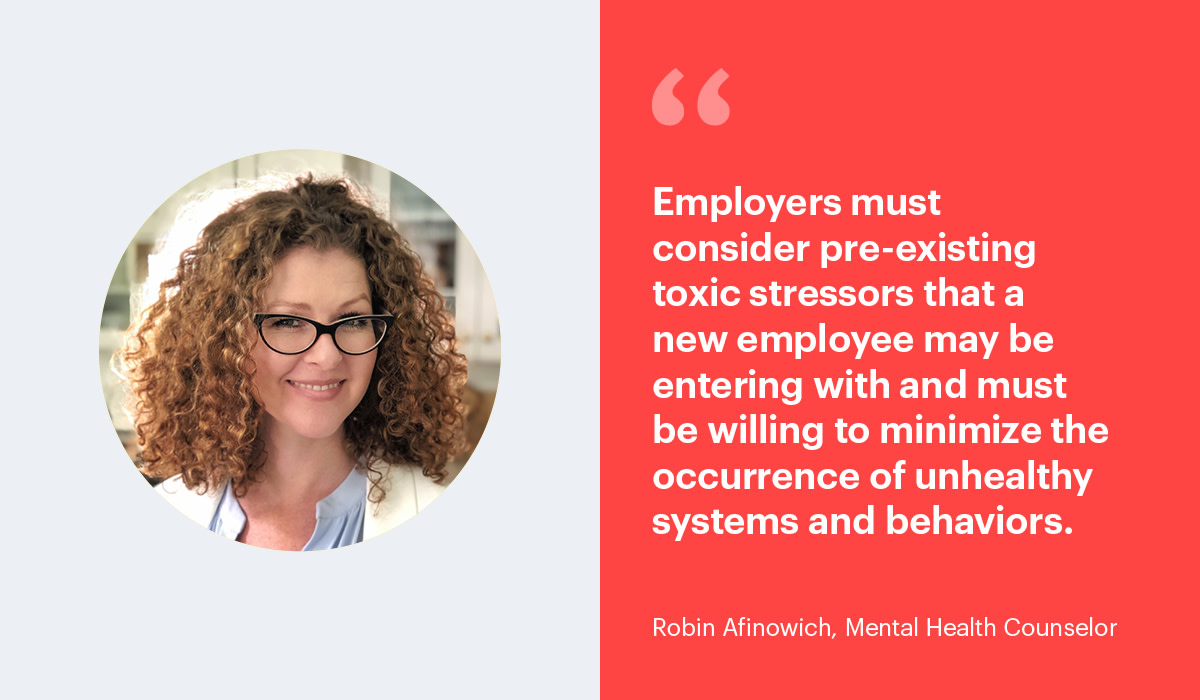Psychological Safety At Work: The Hidden Employee Experience Essential
Psychological safety is crucial for innovation in the workplace. Read why this is important and what employers can do to build it.

How would you expect someone to respond when asked for a quick chat from their supervisor? Neutrally, or with hyperventilating and a mini panic attack, as if expecting to be threatened or verbally abused? Many of the 47.8 million workers who quit their jobs in 2021 did so to get out of working environments which were bad for their mental health.
Burnout and PTSD were some of the most obvious symptoms, primarily for those who worked in the healthcare or front-line service industries. But just as a sunburn doesn’t magically heal the moment one steps into the shade, the stressors of a toxic job can leave a psychological mark long after the employee gets rehired at their fresh start.
The pandemic was hard on a lot of people, and some of those who struggled through the worst of 2020 out of loyalty found that loyalty dissipated when promised rewards and recognition didn’t happen. People were fed up and quit in droves. Employees resigned for better pay, more opportunities, safer working conditions, or simply a manager who treated them like a human being.
Why psychological safety at work is important
Psychological safety at work enables creativity, which is the heart of both productivity and innovation. Having the creativity to think of better processes will benefit those in nearly any job, whether it’s designing an award-winning app, helping customers process insurance claims, or installing HVAC units. But stress is a famous creativity killer, according to the American Psychological Institution.
Even before the pandemic, just having a ping-pong table in the break room wouldn’t be enough to make employees feel happier at work. What good are fun and games if the workload is so heavy that employees don’t feel comfortable openly taking a break? Escaping a toxic workplace bears many similarities to leaving an abusive relationship, and many who eventually do leave deal with residual feelings of worthlessness or helplessness.

from www.businessinsider.com
How does this affect employers? Workplace abuse directly affects businesses. Business Insider conducted a survey within the restaurant industry and found 62% of the survey’s respondents reported emotional abuse from customers, and 49% reported abuse from managers. Restaurants are closing dining rooms and cutting hours to cope with fewer workers.
One of the reasons people stay in toxic workplaces is the inertia of loyalty. After reaching the breaking point, employees will keep moving until they find a job they’re comfortable with. What happens when those who resign due to burnout find new jobs only to leave again? It could take years before this reshuffling settles down.
4 ways to create psychological safety in the workplace
Robin Afinowich, a clinically trained mental health counselor, helps many clients whose stress is workplace-induced. Whether providing professional development training for organizations or counseling those damaged by workplace bullies, she believes that creating the right workplace culture is the first step in reducing toxic behavior and bullying.
“The culture of the workplace has a significant effect not only on the professional development and performance of employees but also greatly impacts their overall health and wellness,” explains Robin.
Here are some tips to increasing psychological safety at work:
Pay employees adequately. Worry over the cost of living is Americans’ top stressor, according to the American Psychology Association’s 2022 survey. People analytics can help.
Avoid overworking teams. Do your organization’s teams have enough employees to operate safely? Use employee data to avoid being short staffed.
Remove bullies. Some workplace bullying may seem invisible, happening in messaging apps or side conversations. Every interaction leaves data in its wake: Employee engagement scores, productivity, and absenteeism all provide evidence of toxic employees.
Watch out for cascades of quitting. Data on when employee exits are happening, why people are resigning, and which groups have higher resignation patterns reveal actionable insights you can take to stem resignations before they happen.

Build a better workplace culture in hybrid times
With so many people quitting and finding new employment, or rethinking their approach to work entirely, it’s more important than ever to build a psychologically safe workplace.
“Employers must consider pre-existing toxic stressors that a new employee may be entering with and must be willing to minimize the occurrence of unhealthy systems and behaviors,” Robin says.
This extends to remote employees as well. Some governments instituted laws backing up the “right to disconnect,” but hybrid work environments make it difficult to tell—and show—when employees are able to log off for the day or take time off. Leaders can set a good example by not sending emails after hours and not openly praising those who work late into the evening or during PTO.

“Workplaces that adhere to unrealistic expectations and overly competitive performance measures tend to create a stressful divide amongst colleagues which ends up with inefficient communication and results in more work and stress for everyone,” says Robin.
When employees carry trauma or residual stress from a previously toxic workplace, building this safe landing place becomes even more important. Employers can become a workplace of choice by considering the mental health needs of their people. Creating a positive work environment where employees feel psychologically safe doesn’t just encourage trust and innovation, it also provides a competitive advantage to employers competing for top talent.
Interested in learning more about Visier? Get in touch with us for a demo!


